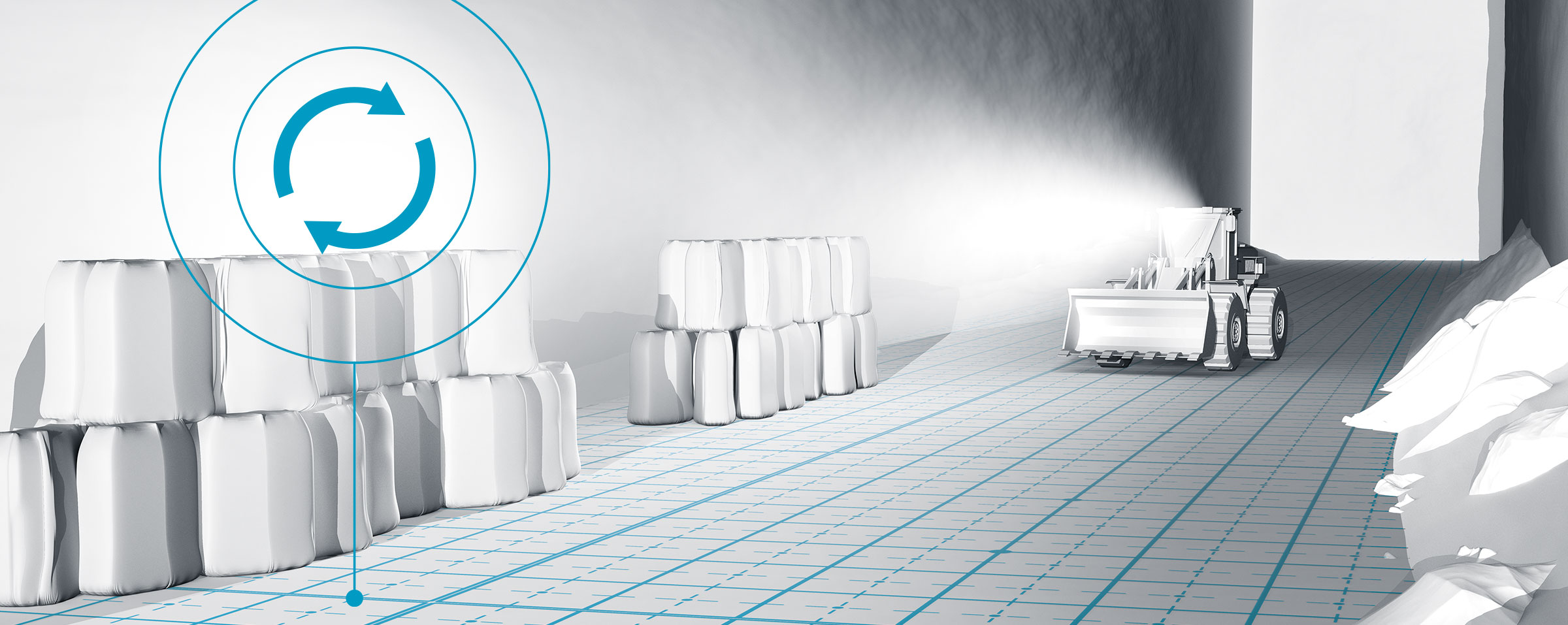Search
Company locations
The whole picture – with just a single click. Find out here where our branches are located, what services they offer and how to contact them.
REMONDIS Group locations
Discover the world of REMONDIS with its approx. 900 branches and associated companies in over 30 countries across Europe, Africa, Asia and Australia.
More stability: underground stowage
In underground stowage, cavities created during rock salt or potash extraction are filled with specially treated mineral waste to protect areas at risk of surface subsidence and to stabilise the inner mine workings (obligation under mining law). Due to the geogenic structure of the rock salt and potash deposits, the mining areas are often located in a combination of water impermeable salt and clay layers. Thus, the use of waste in these cavities is characterised, in particular, by the fact that the pollutant potential is safely isolated from the environment over the long term.
Only tested formulations
Waste such as flue gas residues or fly ash from industrial processes and waste incineration plants (EfW) are the basis for underground stowage material – natural resources are not consumed. Only tested formulations are used. Legal guidelines are consistently implemented, and compliance is ensured through internal quality controls and external monitoring.
Competent advice and complete management services for hazardous domestic and foreign waste
Safety above and below ground
Each waste to be stowed first undergoes a suitability test in which the pollutant potential is investigated and the geo-mechanical properties for the development of the relocated construction material are evaluated. The audit, which is carried out by independent external experts, focuses on the structural, chemical and physical properties of the waste. It must be ensured that the materials do not pose a risk to employees and do not pollute the environment and that the substances have the desired stabilising properties. Through handling and packaging in the upstream plants, stowing materials are produced from the waste according to agreed formulations, whereby focus is placed on the following characteristics:
optimal filling, supporting and setting properties
long-term stabilisation of the geo-mechanical system
compliance with physical constructive requirements
compliance with all legal requirements
The entire treatment and storage process above and below ground is continuously monitored and is subject to the highest safety standards.
Underground stowage: advantages for all
The material recovery of fly ash and flue gas in underground stowage opens up clear advantages in terms of ecology and economy:
Underground storage ensures that hazardous waste is permanently sealed off from the biosphere
The placement of conditioned waste below ground prevents contaminants from entering the ecosystem
The activities of the mine stowage prevent subsidence damage on the earth's surface
Waste processed into stowing construction materials offers a significant safety advantage over disposal in landfills
Stowing waste in mines is a recognised recovery measure and under environmental considerations better than landfilling


